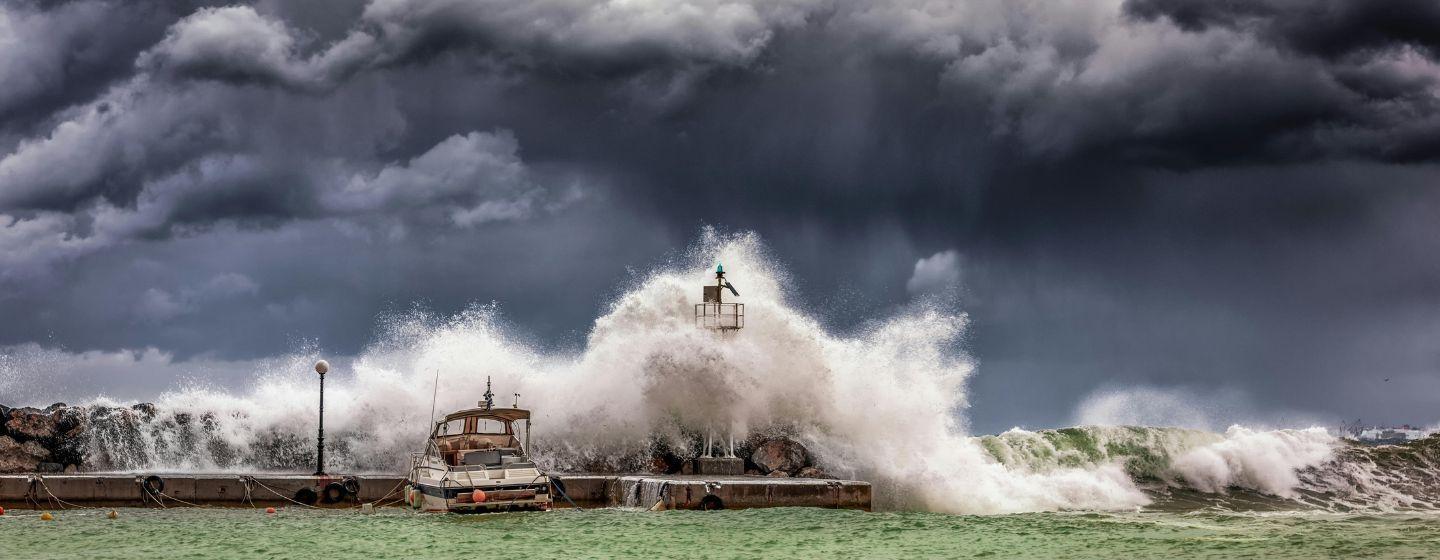Study Shows Extreme Disasters Speed Aging in Primates


2023 broke a record. It’s not a good one.
According to the National Centers for Environmental Information, there were 23 weather and climate disasters in the United States that caused $1B worth of damage. That’s a record for any year since 1980.
The list includes 18 severe thunderstorms and tornadoes, California flooding, the Lahaina firestorm in Hawaii and a severe cold outbreak around Groundhog Day. That dollar-figure damage tops 2020, which had 22 weather-related events. There were 20 in 2021 and 18 such events in 2022, 2017 and 2011.
And those climate disasters aren’t limited to the U.S. Across every continent, extreme weather—such as floods, storms, heat waves, droughts and wildfires—brought life-changing devastation to people, infrastructure and ecosystems as the impact of climate change becomes more dramatic.
But that’s just the financial toll.
“With so many natural disasters in 2023, it will be important to understand the impact on people in terms of mental and physical challenges, in addition to the financial impacts we hear about,” said Julie Horvath, Ph.D., head of the Genomics and Microbiology Research Lab at the North Carolina Museum of Natural Sciences. Horvath is also a biology professor at North Carolina Central University.
A 2021 study published in the Proceedings of the National Academy of Sciences suggests extreme weather events may speed up the aging process.
“Survivors of extreme adverse events, including natural disasters, often exhibit chronic inflammation and early onset of age-related diseases. Adversity may therefore accelerate aging via the immune system, which is sensitive to live experiences,” according to the report.
The study looked at free-ranging rhesus macaques (also known as rhesus monkeys) on Cayo Santiago, an isolated island off the coast of Puerto Rico. These monkeys share many behavioral and biological features with humans, including aging characteristics, however their lifespan is a quarter of a human’s. Because they age faster than humans, scientists use this species of monkey to study aging.
In 1938, about 400 monkeys were relocated from India to the Caribbean Primate Research Center (affiliated with the University of Puerto Rico) on Cayo Santiago. Researchers first studied the behavior of the primates, but in the past decades, scientists have started collecting blood samples to study the genetics and health of the now almost 1,500 monkeys on the island, all descendants of that first group that was moved to the location.
And after Hurricane Maria struck the island in 2017 as a Category 5 storm, scientists decided to utilize the data they were already collecting and launch another angle of research.
They realized by comparing blood samples, initially collected to study health, from before and after the storm, they could gain insight into whether a natural disaster can molecularly accelerate aging in the monkey’s immune system.
“By studying the monkey biological changes (in terms of how different genes turned on and off) both before and after they were exposed to the hurricane, we got a glimpse of how this natural disaster impacted their biological aging process,” adds Horvath. “This allowed us to estimate the impact of natural disasters on human aging.”
Horvath and the other scientists studying the monkeys examined Hurricane Maria’s impact on immune-cell gene expression. It turns out that researchers found gene expression differences between monkeys that were exposed to the hurricane compared to those not exposed.
The data showed that the monkeys (and people) age a little bit faster if you get exposed to an extreme natural disaster like a hurricane. And because the macaque monkeys on the island all have a similar diet (they’re provided food), and they don’t get any other veterinary care, the only explanation for the change in gene expression is the physical and emotional stress from the hurricane.
“We know traumatic life events can have lasting impacts on people’s health and mental state,” said Horvath. “With more climatic natural disaster predicted in the future, monkey models and research studies like this will be invaluable to better deal with the aftermath of upcoming disasters and how we can reduce the impact on humans.”